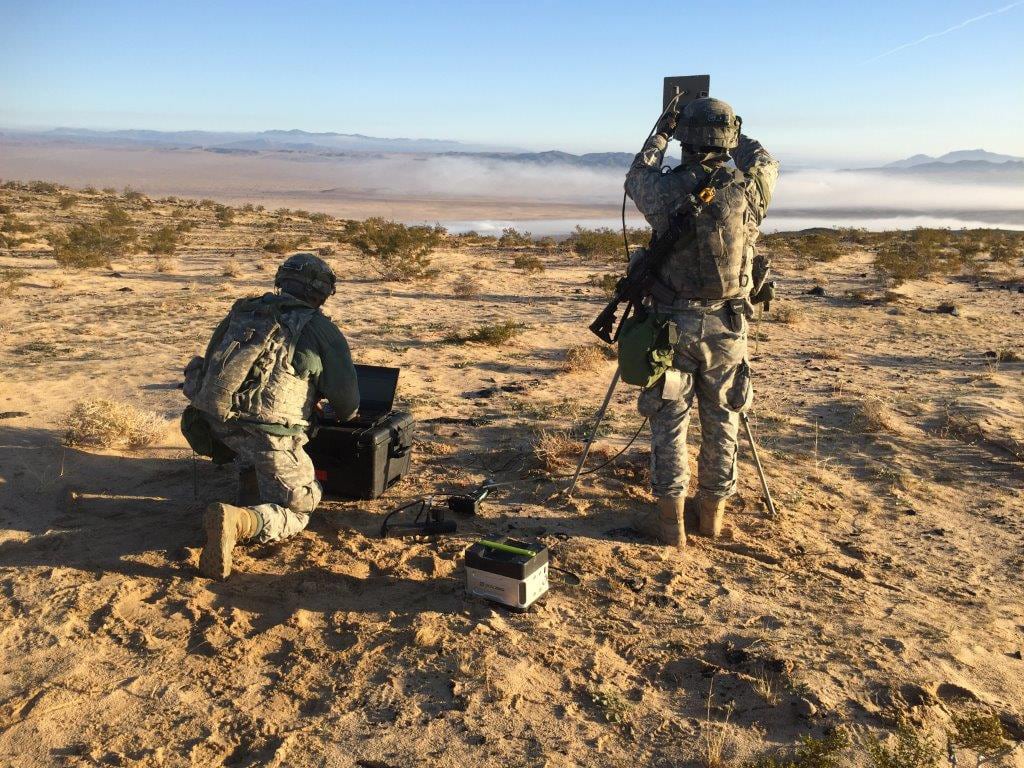With the formalization of the cyberspace domain being so new and so technical, one of the biggest challenges for operators is communicating what capabilities and effects they can bring to bear for commanders.
“I’d say the number one challenge is the educational piece with the unit we’re attached to and a lot of that has to do with educating them on some of the things we can offer them,” 1st Lt. Alvaro Luna with the 780th Military Intelligence Brigade said October 11 during a media round table at the AUSA annual meeting. “Going through MDMP – the military decision making process – and walking them through this is where we can help, this is where we can offer you effects and in a sense making them understand what we can do so they have a plethora of choices of what they’re doing on the battlefield. We’re trying to add just one more tool – cyber – to that arsenal they already have.”
While these are issues facing larger, theater-level entities – leading Cyber Command to stand up forward deployed cyber planning elements with the combatant commands – the Army is gaming out employment of cyber and electronic warfare capabilities within tactical maneuver forces.
[Cyber Command stands up planning cells at combatant commands]
[Here’s how the Army wants to integrate cyber, EW into operational formations]
With these pilot efforts that take place at the National Training Center, Luna said early integration with maneuver elements is critically essential. They start 180 days before a rotation at NTC, Luna explained, with cyber planners integrating with commanders and units sitting down and helping them understand what effects they can bring.
From the cyber perspective, when figuring out what capabilities they can bring to commanders, the primary piece is understanding the operating environment, Luna said.
“If you understand that environment, we can tailor certain effects to that specific operating environment,” he said. “Whether it’s a certain type of router, certain type of switch, certain type of network infrastructure, we begin training on that piece of equipment…there is no magic button. It just takes time, access and understanding of the environment you’re working in.”
“What Lt. Luna is speaking to is really traditional intelligence preparation of the environment. But it’s also such things as how are the social conditions change, is there something you might be able to do when social media takes over in a given area and there are things we’re doing to be able to look at that to combat streams on Twitter or to take a look at what’s being posted on Facebook and how do you deliver information operations message in support of a populace you’re trying to defend,” Lt. Gen. Paul Nakasone, commander of Army Cyber Command told reporters at AUSA.
“In terms the actual mission…it might b, ‘hey we want to prevent this person from talking or we want to be able to track this person as they made their way through the city through a number of different cameras [feeds] that might be valuable to us to hijack,’” Nakasone added. “The discussion that takes place is, what is the effect you want us to achieve on there? Once you tell us that, let’s go back and see what we might be able to do given the technical parameters of where we’re operating.”
These pilots are also helping the Army understand cyber and EW capabilities and at what echelon they should exist. For example, they are determining when an attack on the electromagnetic spectrum might be better than a pure cyber attack.
[Cyber Blitz: Army’s military hide-and-seek tests cyber, EW tools]
Luna explained they’ve determined anything air-related – cellular or Wi-Fi – would be attacked via EW means as opposed to cyber. Luna was sure to clarify that it’s not they can’t use cyber means, but they’re really trying to go through a network and get access via cyber as opposed to sitting on a mountain top and gainig access from a Wi-Fi network.
Mark Pomerleau is a reporter for C4ISRNET, covering information warfare and cyberspace.








